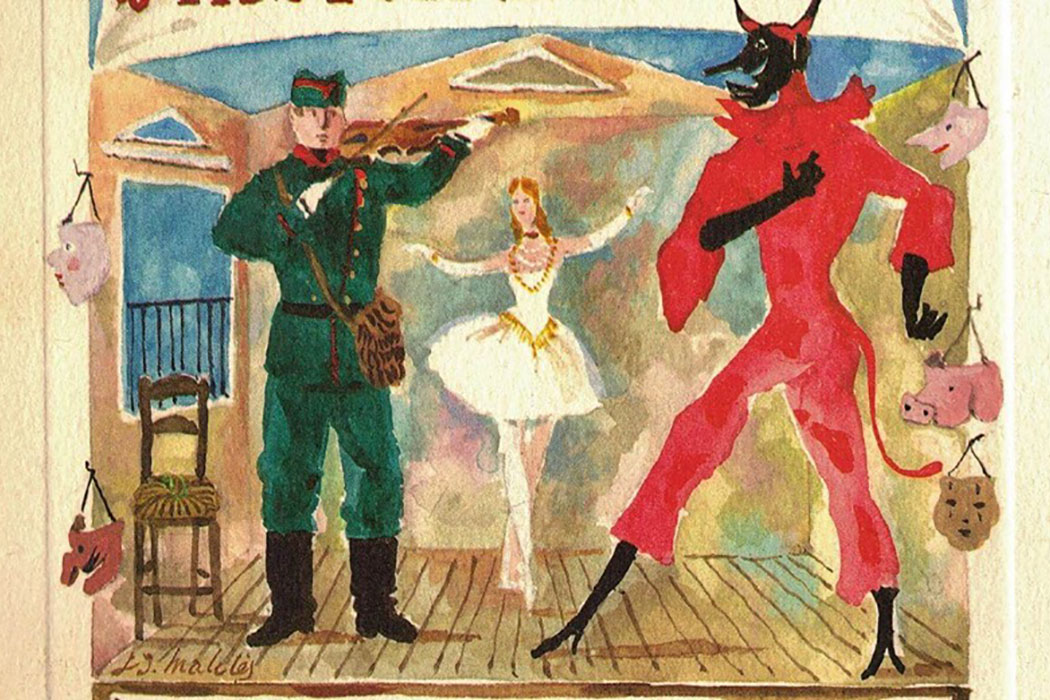One year ago, it would have seemed weird and strange that watching and listening to a Knoxville Symphony Orchestra concert via a video livestream on a television or computer monitor would feel like a victory. Yet, there we were on Sunday afternoon, a bit anxious and curiously grateful for just that electronically distant experience. For the first time in almost a year since its schedule of performances was torn asunder by the necessary precautions dictated by the Covid-19 pandemic, a portion of what would have been the KSO’s Sunday afternoon audience for its Chamber Classics Series found themselves settling into their own chairs in their own homes for a video livestream, instead of into seats in downtown’s Bijou Theatre.
The occasion, a performance of Igor Stravinsky’s The Soldier’s Tale (L’histoire du Soldat), marked a welcome return by the KSO as an organization. Its pandemic absence had been complicated not only by safety precautions, but also by labor disputes between management and musicians, made all the more unwieldy by the orchestra’s size and logistics for concerts. KSO music director/conductor Aram Demirjian side-stepped some of the most obvious problems of scale by programming the Stravinsky 1918 work, a piece written under limited resources and the restrictions of both World War I and the raging Spanish Flu. The hour-long, nine-section work features seven instrumentalists, three actors, and a dancer. The work’s libretto carries Faustian overtones in a story of a Soldier wanting to get back home to his mother, but who encounters the Devil along the way who eventually possesses his soul.
This remarkably successful and musically articulate KSO production was also notable for its collaboration, albeit an obviously socially-distanced one. Conductor Demirjian and the musicians were joined by Marble City Opera’s Kathryn Frady as the Narrator, Joshua Allen as the Soldier, and Rick Eldredge as the Devil, with the staged action directed by James Marvel. Choreographer Lisa McKee of Go! Contemporary Dance Works designed movement for dancer Ashlyn Mason.
Although I would have loved to experience The Soldier’s Tale in the Bijou’s marvelous sonic environment, I had no trouble imagining myself there thanks to judicious decisions made by Demirjian and his collaborators. His seven instrumentalists—high and low textures from each orchestral section—were concertmaster William Shaub, violin; Steve Benne, double bass; Gary Sperl, clarinet; Zach Millwood, bassoon; Phillip Chase Hawkins, trumpet; Sam Chen, trombone; and Bob Adamcik, percussion.
As Stravinsky’s energetically textured score bounced and careened along, given life by the KSO instrumentalists, Frady’s Narrator set its own bouncy rhythm and rhyme that carried the storyline along. Allen’s tenor-pitched Soldier was a perfect set-up for his character’s gentle naïveté that painted him as an Everyman-sort of witless victim exploited for his human flaws. Eldredge, a 2000 UT Theatre MFA alum, was returning to Knoxville in the role of the Devil, a characterization that he mastered here with a beautifully oily push and pull that simply dripped with devilish trickery. All three were directed with the expected energy and style by James Marvel, director of the UT Opera Theatre. The magically resurrected Princess, taken by dancer Ashlyn Mason of Go! Contemporary Dance Works, had three symbolic dances from choreographer Lisa McKee, “Tango,” “Waltz,” and “Ragtime”.
While there has certainly been plenty of precedent for quality video streaming of music and theatre—the Metropolitan Opera’s high-budget Live in HD productions are a perfect example—the pandemic restrictions have made streaming the only viable option if music and theatre performers and performances are to survive. Admittedly though, the basic elements of video or cinema production—camera angles and camera movement, lighting, microphone placement, and audio mixing—carry the potential to alter the performer-to-audience communication, if not the audience’s entire perspective, that is at the heart of a live performance. And, given that a stream is available to a wide array of devices, that experience may vary wildly. That said, we’ll just have to be grateful that we have major efforts like this one to carry us through the difficult times.








